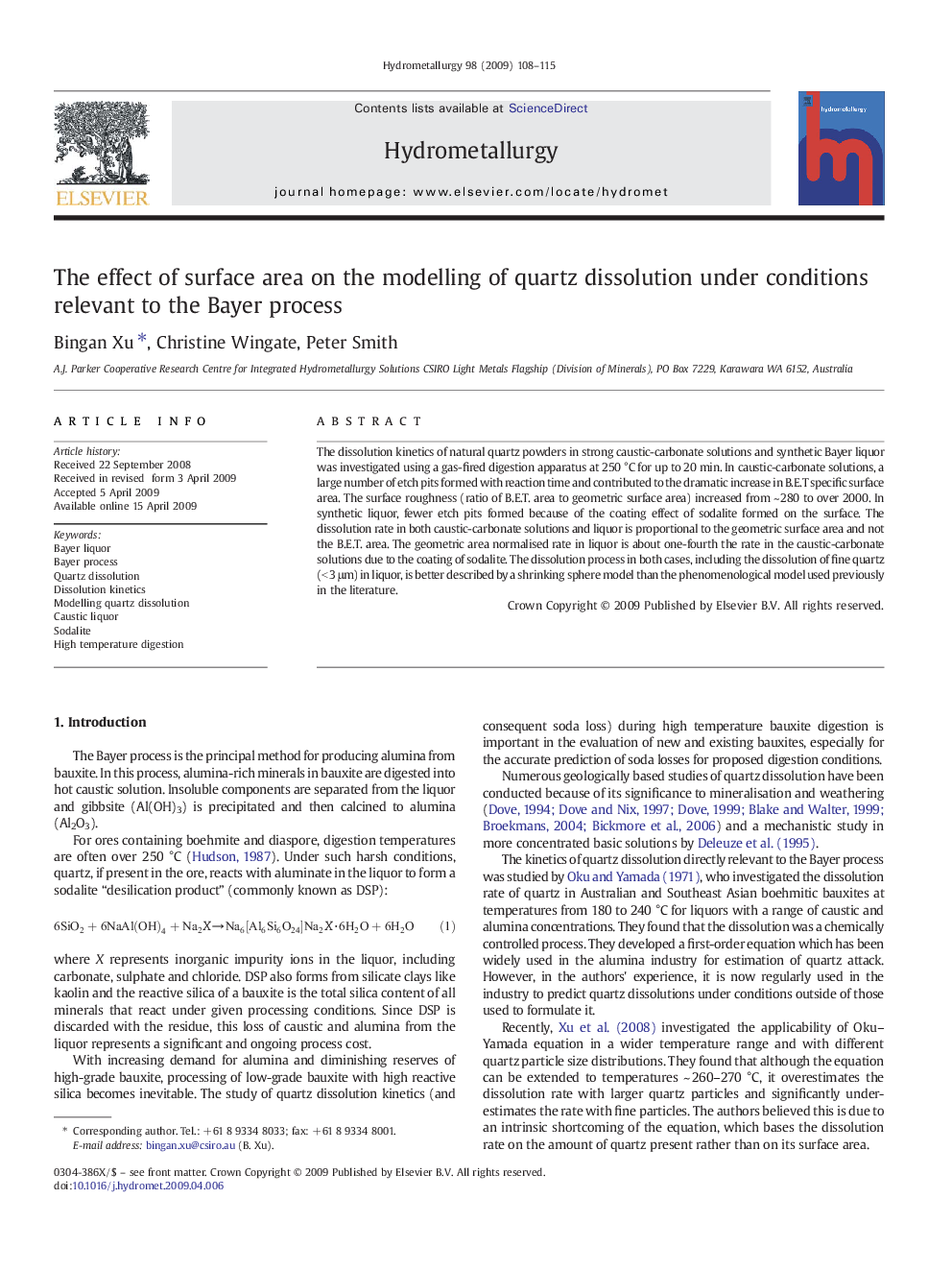| Article ID | Journal | Published Year | Pages | File Type |
|---|---|---|---|---|
| 212938 | Hydrometallurgy | 2009 | 8 Pages |
The dissolution kinetics of natural quartz powders in strong caustic-carbonate solutions and synthetic Bayer liquor was investigated using a gas-fired digestion apparatus at 250 °C for up to 20 min. In caustic-carbonate solutions, a large number of etch pits formed with reaction time and contributed to the dramatic increase in B.E.T specific surface area. The surface roughness (ratio of B.E.T. area to geometric surface area) increased from ~ 280 to over 2000. In synthetic liquor, fewer etch pits formed because of the coating effect of sodalite formed on the surface. The dissolution rate in both caustic-carbonate solutions and liquor is proportional to the geometric surface area and not the B.E.T. area. The geometric area normalised rate in liquor is about one-fourth the rate in the caustic-carbonate solutions due to the coating of sodalite. The dissolution process in both cases, including the dissolution of fine quartz (< 3 μm) in liquor, is better described by a shrinking sphere model than the phenomenological model used previously in the literature.
